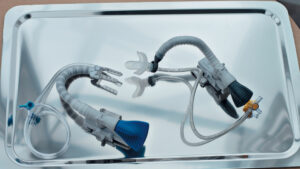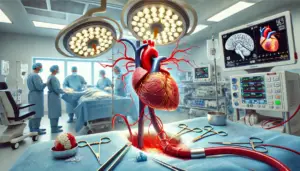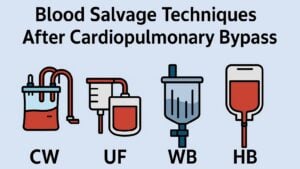Background: Systemic anticoagulation with heparin during cardiopulmonary bypass (CPB) should be neutralized by protamine administration to restore normal hemostasis. Our previous study showed the protamine-to-heparin ratio (P-to-H) of 1:1 (1 mg protamine:100 IU circulating heparin; 1.0 Ratio) is likely an overestimation. Thus, we reduced the P-to-H in the HMS Plus Hemostasis Management System to 0.9:1 (0.9 Ratio) for 5 months and then to 0.8:1 (0.8 Ratio). We monitored post-operative (post-op) bleeding in the setting of reduced protamine dose (PD). Methods: We performed a retrospective study of 632 patients (209 for the 1.0 Ratio, 211 for 0.9 Ratio, 212 for 0.8 Ratio group) who underwent cardiac surgery to measure the reduction of PD and how it affects 24-hour (24 h) post-op chest tube output. We also analyzed the entire data set to explore whether further reduction of P-to-H is warranted. Results: While there was no difference in the indexed heparin dose among the three groups, we achieved a significant reduction in the indexed actual protamine dose (APDi) by 24% (0.9 Ratio) and 31% (0.8 Ratio) reductions compared to the 1.0 Ratio group. On average, APDi was 88 ± 22, 67 ± 18, and 61 ± 15 mg/m2 in the 1.0, 0.9, and 0.8 Ratio groups, respectively. We found no significant difference in 24 h post-op bleeding among the three groups. Conclusion: 1.0 Ratio at the completion of CPB is likely an excessive administration of protamine. With the stepwise reduction of PD, we observed no increase in post-op bleeding, which may indicate that no meaningful increase in heparin rebound occurred. In addition, further analysis of the entire data set demonstrates that a 0.75 Ratio is likely sufficient to neutralize the heparin completely.
Key words: Protamine-to-heparin ratio / Protamine dose / Post-operative bleeding / Heparin protamine titration / Cardiopulmonary bypass
J Extra Corpor Technol 2023, 55, 105–111







